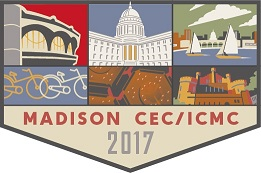Speaker
Description
The relatively low cost of multifilamentary Nb$_3$Sn strand compared to HTS alternatives makes it highly valuable to magnet builders to improve the critical current densities (J$_c$) beyond the current production limits of ~ 3 kA/mm$^2$ (12 T,4.2 K) available today. Future applications such as the proposed Future Circular Collider demand increased J$_c$ at higher fields (≥16 T) that current heat treatments have not been optimized for. The two commercially developed high J$_c$ Nb$_3$Sn strands, Powder In Tube (PIT) method, and Rod Restack Process, can be improved primarily in four ways; increase the fine-grain A15 area, increase T$_c$ and H$_{c2}$ homogeneity within the A15 volume, reduce A15 grain size to increase grain boundary pinning density, or introduce point pinning which favorably shifts the maximum pinning force to higher fields. Ideally, any method which accomplishes this should be utilized within the existing manufacturing processes to prevent long or costly R&D projects or impacting yield. Thus optimizing the heat treatment to reduce grain size, while increasing the volume of fine-grain A15 and increasing the H$_{c2}$ homogeneity would be the most desirable route, however, higher temperature heat treatments that better favor H$_{c2}$ also increase the grain size and thus the benefit of improving H$_{c2}$ is offset by fewer pinning sites. In conventional PIT strands, however, 30% of the superconducting A15 phase volume is large-grain (LG) A15, which does not contribute to transport current, and converting this volume to fine grain A15 would be highly beneficial. The LG A15 has proven historically difficult to avoid or control, however, in the past 5 years we have been able to identify the origin of the LG A15 morphology in PIT wires and have demonstrated heat treatments that control its nucleation and growth. Here we summarize our progress in improving the high field J$_c$ of Nb$_3$Sn PIT conductors.
